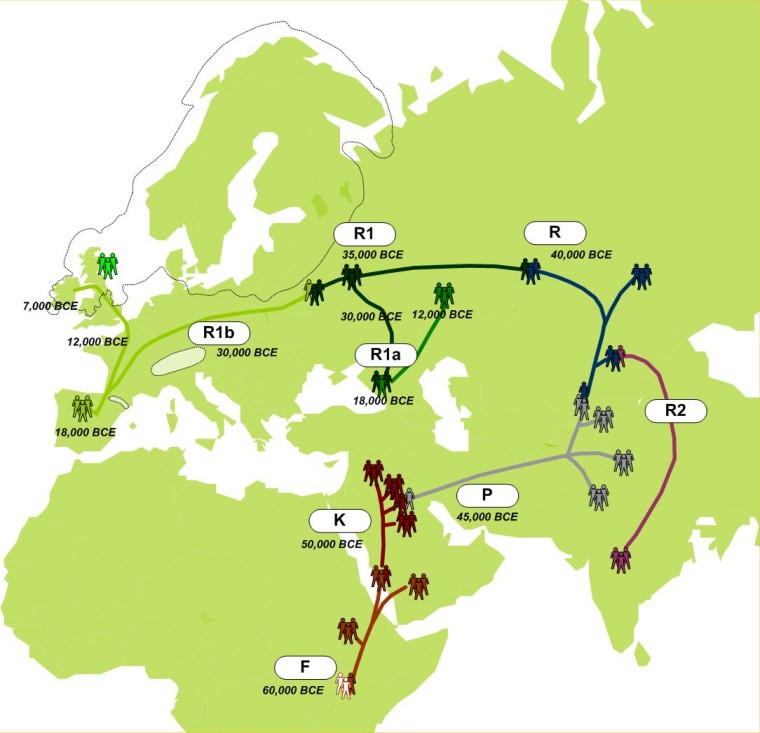
SNP Analysis
When working with small groups of people to determine patterns in the population as a whole, a lot of assumptions are made. One major assumption is that the small group of people best represents the whole population. That is, the cross section had the same percentages of difference as the whole. This is where some guesswork and mathematics come into play. The guesswork involved also makes an assumption when studying the differences between people living in geographic separate regions. The similarities between the people could indicate a common origin and the differences represent the splitting into lineages.
Fortunately, the science of studying people has given the tools to the researcher the ability to determine actual patterns with the best possible confidence in their observations.
Whether or not the reader believes in evolution, creationism, or some other blend, we do know that all people have a common origin. The DNA used for this study does not have anything to do with race, but a grandfather-father-son genetic inheritance that varies very little over a large period of time. This difference can be traced in the population today.
Below is a map based on SNP DNA testing showing the migration (or spreading) and possible origins of the lineage that gave rise to the European Mesolithic (middle stone age) culture - hunters and gathers. The dotted lines show the extent of the glaciers during the ice age (not the maximum) around 30,000 years ago. About 18,000 years ago the glaciers started to grow and pushed the people southwards until they took refuge in claves (pockets) of livable area. These are divided into the three major SNP haplogroups that are in Europe today. The Iberian peninsula (Spain and Portugal) contained the R1b SNP haplogroup. In Italy, Greece and that region contained haplogroup I. Eastern Europe was the refuge of haplgroup R1a. When the ice retreated about 12,000 years ago, the R1b haplogroup started making their way northwards along the Atlantic coast (where the good hunting and fishing was). When the ice pulled back from northern France and southern Britain, it left a strip of land to form a bridge (the ice had used so much of the water the sea level was about 300 meters lower than today).
It was about 7,000 years ago when the ice had retreated much further these peoples had migrated to Ireland. These were not the Celtic people. The Celts are typically noted as a branch off of this group (R1a) who later migrated to Ireland as the Neolithic (new stone age) culture - farmers.
The intermingling of these two cultures covered a broad
period of time rather than a sudden invasion. Without going into long explanation, there are three
short, but excellent, good books that will help the researcher understand these peoples. These books
are a part of a series and are:

2 Aug 2004 (updated May 2006) Philip E McManus